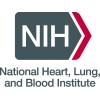
Identification of Genes Expressed in Atherosclerotic Plaque
AtherosclerosisThis study will identify genes and proteins in the blood of patients with atherosclerosis and in that of normal volunteers. The findings will be compared to determine the influence of these substances on the development of atherosclerosis a narrowing and hardening of blood vessel walls by deposits of fatty substances. Blood vessel blockage caused by atherosclerosis can impede blood flow and cause stroke, heart attack and poor limb circulation. The information from this study may lead to better ways to detect, prevent and treat these diseases. Healthy volunteers and patients scheduled for carotid endarterectomy at Suburban Hospital in Bethesda, Maryland, are eligible for this study. Carotid endarterectomy is a surgical procedure in which the inner layer of the carotid artery (neck artery supplying blood to the brain) is scraped away to open the blocked vessel. Participants will undergo the following tests and procedures: Patients Blood sample: Collection of about 32 cc (8 tablespoons) of blood for genetic and protein analysis Tissue sample: Collection of a piece of diseased blood vessel discarded from the endarterectomy procedure Review of records: Review of medical records for information about past illnesses, medications, tests, and so forth, if needed Normal Volunteers Blood samples: Collection of about 32 cc (8 tablespoons) of blood for genetic and protein analysis Carotid artery ultrasound: Ultrasound imaging of the neck arteries for detection of any blockage Electrocardiogram: Recording of the electrical activity of the heart to detect any abnormalities in heart rhythm Echocardiogram: Ultrasound examination to detect possible abnormalities of the heart muscle Cardiac stress test: Treadmill stress test to detect possible heart vessel blockage (for subjects who have not had a cardiac stress test in the past year) Review of records: Review of medical records for information about past illnesses, medications, tests, and so forth, if needed

Atherosclerosis, Plaque and CVD in Communities
AtherosclerosisCardiovascular Diseases4 moreTo identify new cellular, metabolic, and genomic correlates of atherosclerotic plaque and early pathologic changes in the vascular wall and determine their consequences for coronary heart disease and stroke.

Aortic Calcium: Epidemiology and Progression -- Ancillary to MESA
Cardiovascular DiseasesHeart Diseases2 moreTo study the epidemiology of aortic calcium.

Modeling DNA Diversity in Reverse Cholesterol Transport
Cardiovascular DiseasesHeart Diseases1 moreTo identify genetic variation in reverse cholesterol transport (RCT) and its role in cardiovascular disease and atherosclerosis.

Oxford Niaspan Study: Effects of Niaspan on Atherosclerosis and Endothelial Function
AtherosclerosisAIM 1 will test the hypothesis that elevation of high-density lipoprotein (HDL) through treatment with Niaspan will accelerate the regression of atherosclerotic plaque in patients with established atherosclerosis. The investigators will therefore study patients with atherosclerosis in the aorta and carotid artery. Plaque quantification will be with magnetic resonance imaging (MRI). AIM 2 will assess the ability of Niaspan to improve endothelial function in patients with coronary artery disease and type II diabetes mellitus, who typically have low high-density lipoprotein cholesterol (HDL-C), and high risk of cardiovascular events.

Early Detection of Atherosclerosis: a Randomized Trial in the Primary Prevention of Cardiovascular...
AtherosclerosisCardiovascular DiseasesThe incidence of cardiovascular diseases is still high and further efforts should be done in primary prevention. The main objective is to quantify the burden of subclinical atherosclerosis using non-invasive techniques,and to study the impact of this assessment and consequent treatment in the progression of atherosclerosis and in the incidence of cardiovascular diseases.

The Impact of Selected Factors on the Cardiovascular System in Chronic Kidney Disease
Atherosclerosis of ArteryInflammation3 moreChronic kidney disease (CKD), is characterized by accelerated development of atherosclerosis and advanced remodelling of vessels and the heart. It is associated with many factors, including inflammation, arterial hypertension, hyperlipidemia, hyperhomocysteinemia, secondary hyperparathyroidism, and oxidative stress. Hypertension is one of the most critical risk factors for cardiovascular complications. It leads to the formation of structural changes in the vascular system: it impairs the activity of the endothelium, causes hypertrophy and remodelling of the vascular wall, reduces the susceptibility of the vessels and accelerates the development of atherosclerosis. This study aimed to identify the processes and their representative markers, the concentration of which in the serum may reflect the cardiovascular system status and can predict the increased mortality in HD patients.

Prognostic Value of Myocardial Perfusion Heterogeneity in Normal SPECT Studies
Coronary Artery DiseaseCoronary AtherosclerosisMyocardial perfusion imaging is an efficient tool to assess the risk of major cardiac events for patients with known or suspected coronary artery disease. If the test is normal, or if the abnormalities of perfusion represent less than 10% of the left ventricle myocardium, the patient is considered at low risk and should be managed with optimal medical treatment only. Recently, new gamma cameras using semi-conductor detectors have been developed. Their diagnostic performances have been demonstrated and confronted with various anatomical and functional reference techniques, such as coronary angiography and FFR. The prognostic value of a normal SPECT MPI has not been specifically assessed yet. Coronary microvascular dysfunction (CMVD) has been demonstrated to be an early marker of coronary artery disease (CAD). Preliminary data suggest that myocardial perfusion heterogeneity (a potential surrogate marker of endothelial dysfunction) can be assessed on conventional MP-SPECT, but its additive and independent prognostic value over the presence of myocardial ischemia remain unknown. Accordingly, the purpose of this study is : To assess the prognostic value of a normal myocardial perfusion stress imaging using a semiconductor gamma camera with a dual isotope high speed protocol, To evaluate the prognostic value of myocardial perfusion heterogeneity assessed by a new automatized image processing method, in normal SPECT MPIs. The main hypothesis is that the presence of myocardial perfusion heterogeneity is predictive of cardiovascular events in patients referred to the Nuclear Cardiology Department for routine evaluation of known or suspected CAD.

Non-invasive Computer-Aided Phenotyping of Vasculopathy
Carotid AtherosclerosisPeripheral Arterial DiseaseThe investigators use MRI and/or CT to evaluate the extent, as well as, the structure, composition, and functional aspects of atherosclerotic plaques in human carotid and femoral arteries in patients scheduled to undergo an endarterectomy of the aforementioned vascular beds as part of their routine clinical care.

Mobile Unit Screening of Pathologies Associated With Chronic Diseases - Feasibility
Chronic Obstructive Pulmonary DiseaseType II Diabetes1 moreThe main objective of this study is to assess the feasibility of standardized screening for comorbidities among patients with one or more of three chronic diseases (diabetes, COPD, atherosclerosis) by a mobile unit at times and localities under-served by health actors.
